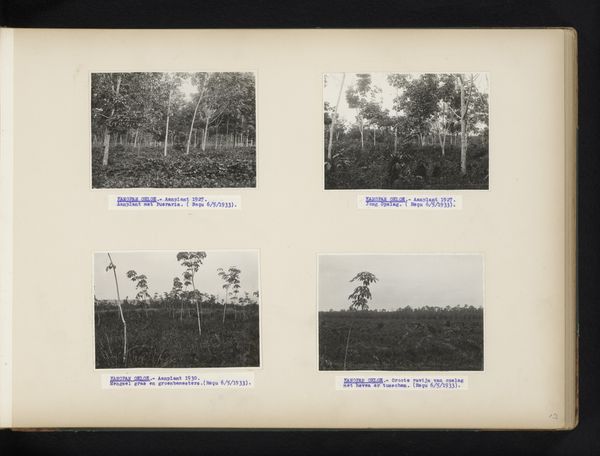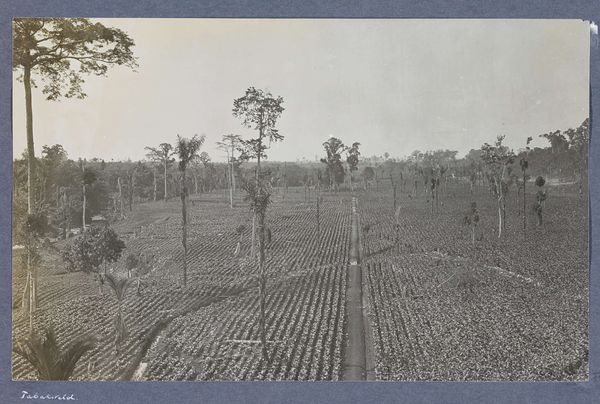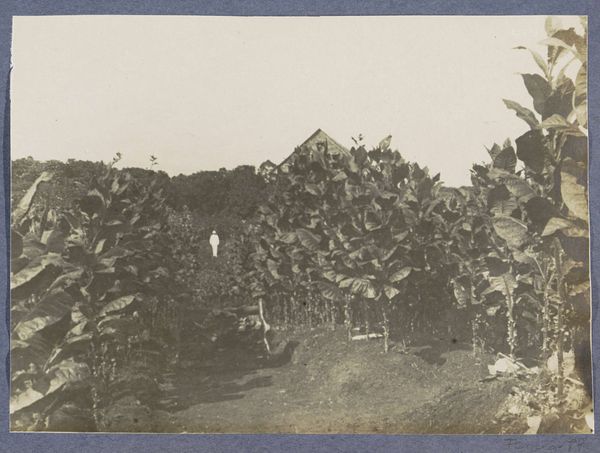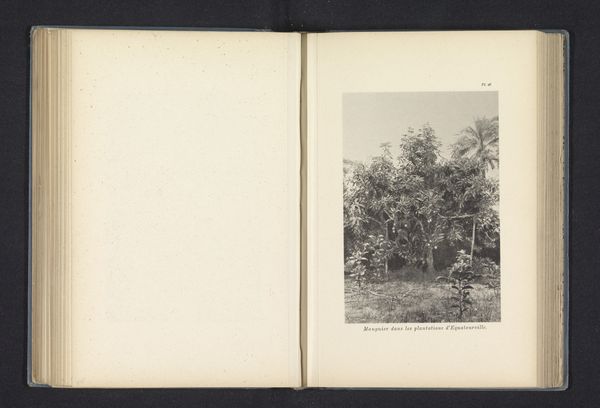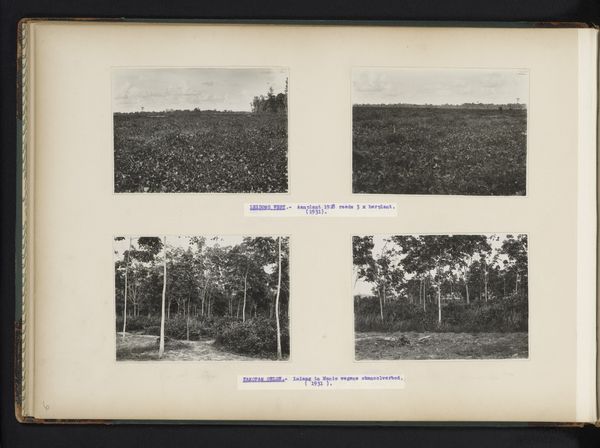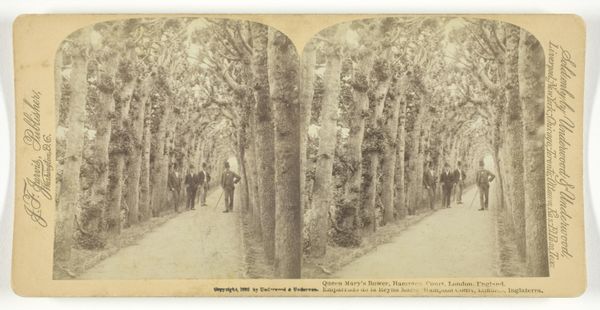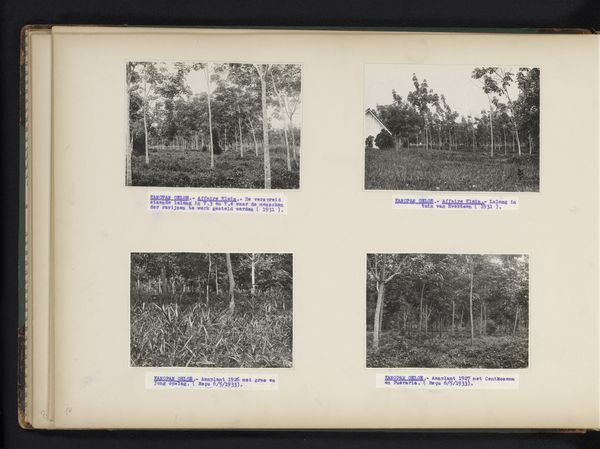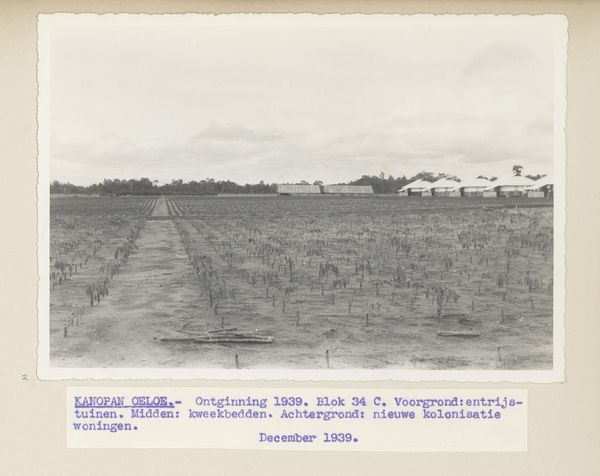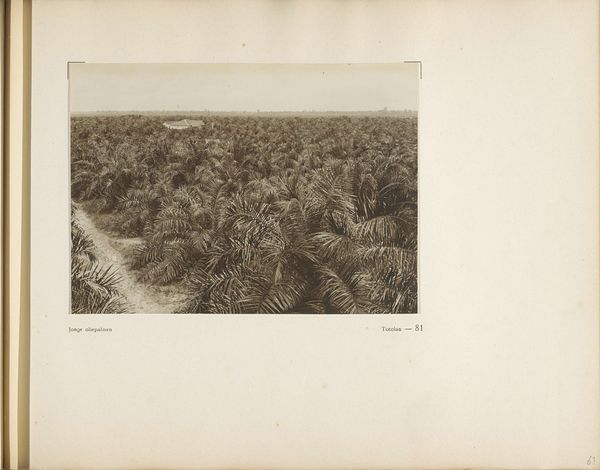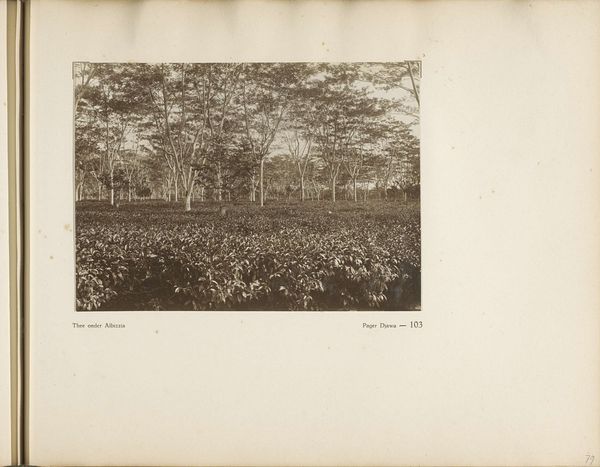
photography
#
yellowing
#
aged paper
#
landscape
#
photography
#
remaining negative space
#
soft colour palette
#
watercolor
#
realism
Dimensions: height 152 mm, width 200 mm
Copyright: Rijks Museum: Open Domain
Curator: This photograph, taken in the 1930s, depicts a plantation scene: "Leidong West - Aanplant 1927 met Toeba tusschenplanting". The scene exudes order and yet, I immediately get a slightly ominous, quiet feeling. What is your impression? Editor: It has this strange, regimented beauty. I am mostly struck by the scale and labor suggested. The identical saplings meticulously arranged tell a story of material transformation, an industry. The labor put in planting all those trees. Curator: Yes, exactly. These saplings echo motifs of imposed order seen in landscapes elsewhere in that era. But the photograph is intriguing. This formal arrangement of the young trees suggests not just a natural scene, but something symbolic. It reminds me of the Garden of Eden. Editor: A forced Eden perhaps? Rubber, I am presuming? Given the period, one assumes intense labor to plant these trees to provide material for production and mass consumption. It is eerie to consider the many hidden layers within its simplicity, especially since we are only seeing the end result. Curator: These plantings may reference not only wealth, but also the cultural exchange and interaction with Indonesia, where this landscape photograph was taken. It evokes a specific cultural memory and relationship. The photograph transforms a simple act of planting into something pregnant with colonial meaning. Editor: And look how the aged paper supports that sentiment of something lingering, something not being fresh or new or innocent. Curator: That aging process adds another layer, like a palimpsest, altering how the viewer understands the depicted scene today. This photographic method itself adds complexity. Editor: True. The aged paper emphasizes the slow, material processes connected to this transformation of land for production, making it a more potent reminder of the time, labor, and value ingrained into the photograph itself, as a document of industry. Curator: For me, viewing this piece today brings an almost elegiac feel for those forgotten origins, the symbolism of the location itself and this practice and this scene as cultural memory. Editor: Indeed, examining it more closely reveals so much regarding both material transformation and those implicit processes lying just below the surface. Thank you for highlighting those subtleties!
Comments
No comments
Be the first to comment and join the conversation on the ultimate creative platform.

